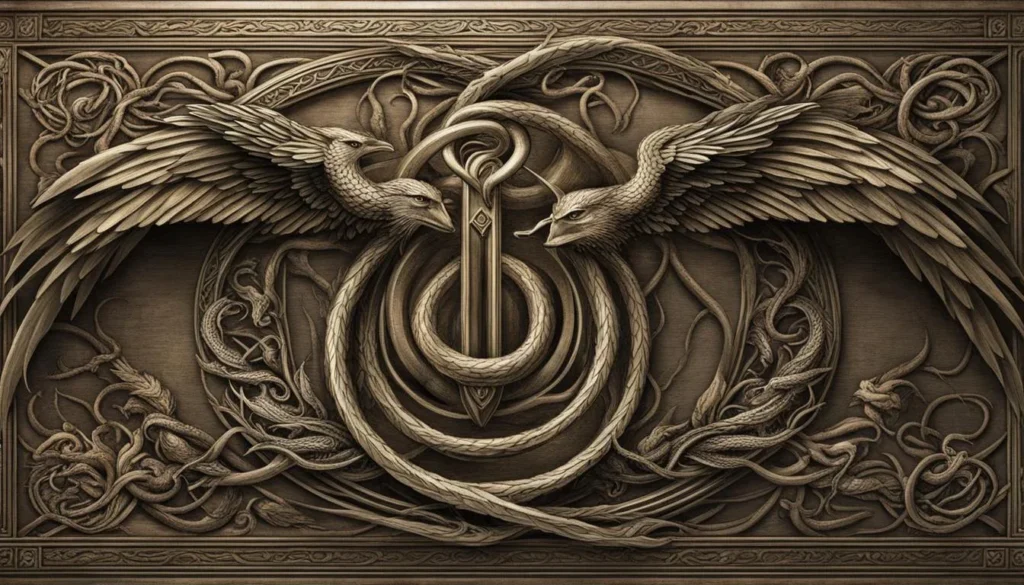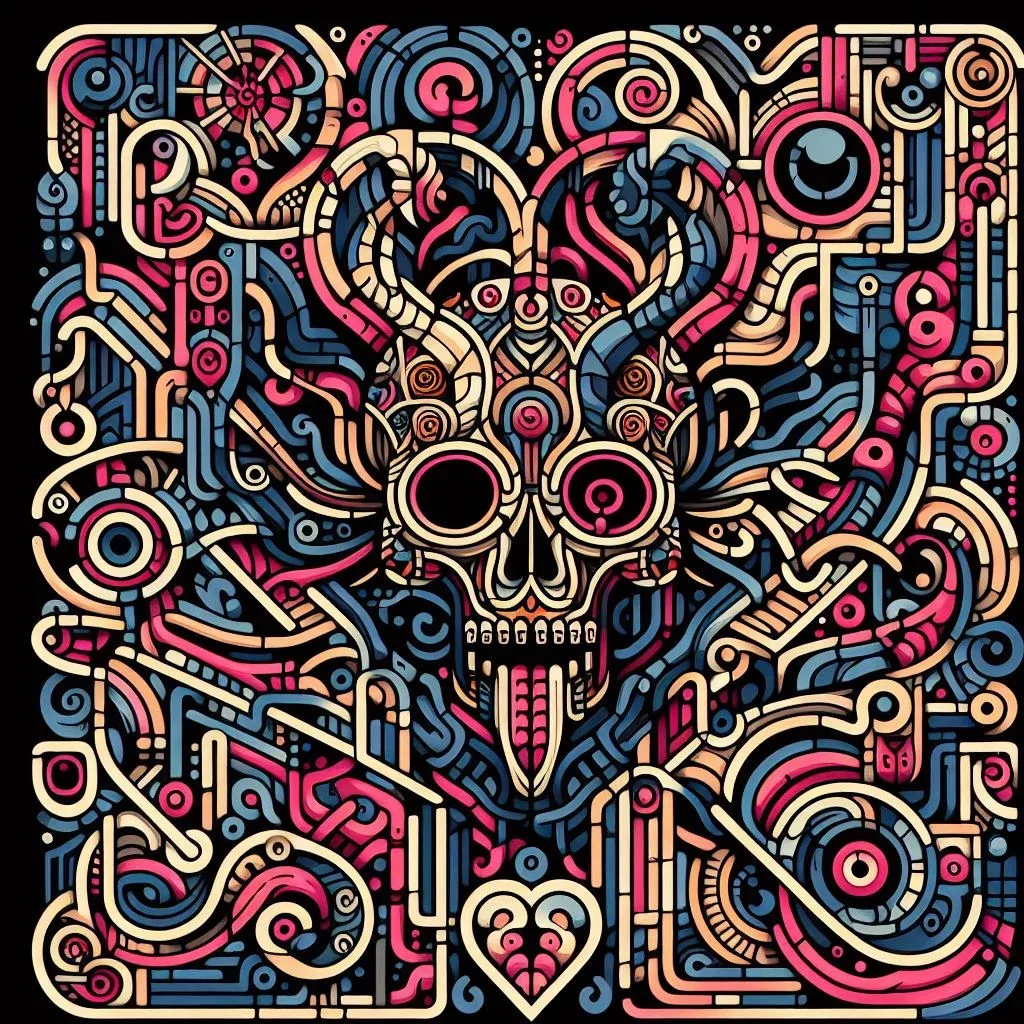Stoicism is a philosophy that originated in Ancient Greece and its main focus is the search for inner peace, moral excellence and self-control. In this article, we will explore the meaning of Stoicism and its main symbols, which represent its principles and ideals. We will also cover how to apply Stoicism in daily life and the teachings of Stoic philosophers.

Main Ideas of Stoicism
- Stoicism seeks inner peace and emotional balance.
- A stoic philosophy values virtue and self-control.
- Stoics seek to live in accordance with nature and accept what cannot be changed.
- The practice of Stoicism involves the cultivation of wisdom and the pursuit of moral excellence.
- Stoicism offers a guide to facing life's adversities with serenity and resilience.
Understanding Stoicism and its symbols helps us apply its principles to daily life, cultivating virtue, self-control, and the pursuit of moral excellence. By adopting this philosophy, we can find a more authentic and meaningful life.
The Importance of Symbols in Stoicism
The Stoics historically did not attach much importance to formal symbols in their philosophical practice. Rather than symbolic rituals, they emphasized the practical application of ethical principles in everyday life. However, over the centuries, the Stoics developed and adopted some symbols that represent their principles and ideals. These symbols serve as reminders of the Stoic way of life and can provide guidance and inspiration for those seeking to adopt the philosophy.

Although Stoicism does not have a widely recognized official symbol, there are some symbols often associated with this philosophy. Some of the most common symbols of Stoicism include the lotus flower, anchor, caduceus, owl, labyrinth, sun, and ship. Each of these symbols represents different concepts and ideas of Stoicism, such as stability, wisdom, balance, virtue, and life's journey. These symbols can be used as visual reminders for those who follow the stoic philosophy.
By using these symbols, followers of Stoicism are constantly reminded of their core principles and values. They serve as visual reminders to stay focused on the pursuit of inner peace, moral excellence, and self-control. Symbols of Stoicism can be incorporated into jewelry, decorative objects, tattoos and other everyday elements, as a way of remembering and reinforcing these principles in our daily lives.
| Symbol | Meaning |
|---|---|
| Lotus flower | The ability to find serenity and virtue even in adverse circumstances |
| Anchor | Stability and firmness in the face of life's storms |
| Caduceus | Balance and harmony between opposing forces, seeking a virtuous life |
| Coruja | Search for knowledge and self-knowledge, symbolizing wisdom and reflection |
| Maze | Journey of life and search for wisdom, facing challenges and obstacles |
| SOL | Represents the light of reason and the power of the mind to find the truth |
| Ship | The journey of life as a journey to seek wisdom and virtue |
The Symbols of Stoicism
Although Stoicism does not have a widely recognized official symbol, there are some symbols often associated with this philosophy. Some of the most common symbols of Stoicism include the lotus flower, anchor, caduceus, owl, labyrinth, sun, and ship. Each of these symbols represents different concepts and ideas of Stoicism, such as stability, wisdom, balance, virtue, and life's journey. These symbols can be used as visual reminders for those who follow the stoic philosophy.

The lotus flower, although more associated with Eastern philosophical traditions, also has relevance in Stoicism. This beautiful flower, which blooms amid mud and mire, symbolizes the ability to find serenity and virtue even in adverse circumstances. Just as the lotus flower emerges immaculate from the mud, Stoics seek to rise above worldly passions and desires, finding inner peace and wisdom.
The anchor is a common symbol in Stoicism and represents stability and steadfastness in the face of life's storms. Just as an anchor keeps a boat anchored amid rough waters, Stoics seek to anchor their emotions and thoughts in solid and virtuous principles. The anchor is also a reminder to stay in the present and accept what cannot be changed, finding strength in inner stability.
The caduceus, a symbol associated with the god Hermes in Greek mythology, represents balance and harmony between opposing forces, such as the rational and the emotional. In the Stoic context, the caduceus symbolizes the search for integration between the mind and heart, reason and emotions, aiming for a virtuous life in harmony with oneself and the universe.
| Symbol | Meaning |
|---|---|
| Lotus flower | Ability to find serenity and virtue in adverse circumstances |
| Anchor | Stability and firmness in the face of life's storms |
| Caduceus | Balance and harmony between mind and heart, reason and emotions |
The Lotus Flower and its Meaning in Stoicism
The lotus flower is a symbol that has deep meaning in Stoicism, although it is more associated with Eastern philosophical traditions. This beautiful flower, which grows amidst mud and silt, represents the ability to find tranquility and virtue even in adverse circumstances.

Just as the lotus flower emerges unsullied from the dirt, Stoics seek to rise above worldly passions and desires, cultivating inner peace and wisdom. The lotus flower reminds us that regardless of the difficulties we face, we can find inner serenity and blossom into our human potential.
In Stoicism, the lotus flower is a powerful symbol that reminds us that we can overcome obstacles and find clarity even in the midst of chaos. It represents the ability to remain calm and balanced in the face of adversity, seeking moral excellence and the search for true happiness.

| Symbol | Meaning |
|---|---|
| Lotus flower | Ability to find serenity and virtue in adverse circumstances |
| Anchor | Stability and firmness in the face of life's storms |
| Caduceus | Balance and harmony between reason and emotion |
| Coruja | Search for knowledge and self-knowledge |
| Maze | Life's journey and quest for wisdom |
By incorporating the meaning of the lotus flower into our daily lives, we can follow Stoic principles and find greater mental and emotional tranquility. Through the practice of Stoic philosophy, we can learn to better deal with life's adversities and challenges, cultivating greater inner peace and striving for moral excellence.
The Anchor and its Meaning in Stoicism
The anchor is a common symbol in Stoicism and represents stability and steadfastness in the face of life's storms. Just as an anchor keeps a boat anchored amid rough waters, Stoics seek to anchor their emotions and thoughts in solid and virtuous principles. The anchor is also a reminder to stay in the present and accept what cannot be changed, finding strength in inner stability.

The Stoics believed that inner peace and serenity can be achieved through controlling desires and emotions. By anchoring yourself in ethical and virtuous principles, such as justice, wisdom and courage, it is possible to find emotional balance even in the midst of life's adversities.
Just as an anchor provides safety and security, practicing stoicism helps develop resilience and self-mastery. Through contemplation and reflection, the Stoics sought to understand the laws of nature and find a greater purpose in their lives. This search for self-knowledge and wisdom allowed them to face challenges with serenity and discernment.

Anchor Principles in Stoicism
In Stoicism, the anchor symbolizes the following principles:
- Emotional and mental stability;
- Self-control and control of emotions;
- Resilience in the face of adversity;
- Stay in the present, accepting what cannot be changed;
- Seek strength and balance in inner stability.
By adopting these principles and seeking to be anchored in ethical and virtuous values, it is possible to cultivate a more authentic and meaningful life, in line with the teachings of Stoicism.
The Caduceus and its Meaning in Stoicism
The caduceus is a widely known symbol associated with Greek mythology, specifically with the god Hermes. In the context of Stoicism, the caduceus acquired a special meaning and represents the search for balance and harmony between opposing forces, such as reason and emotions. It symbolizes the integration between the mind and the heart, aiming for a virtuous life in harmony with oneself and the universe.

In the classical representation, the caduceus is represented by a staff with two serpents entwined around it and with wings at the top. Snakes symbolize the rational and emotional aspects of human nature, while wings represent the search for elevation and transcendence.
“The caduceus is a powerful visual reminder for Stoics, who seek to find a healthy balance between reason and emotions. He reminds us that to live a virtuous life, we must be able to integrate and harmonize these aspects of our inner nature.”
By contemplating the caduceus, Stoics are encouraged to cultivate wisdom, self-control, and the pursuit of moral excellence, recognizing the importance of balancing the mental and emotional faculties. This search for inner balance is fundamental to finding serenity and virtue even in the midst of life's adversities.

Symbols of Stoicism
In addition to the caduceus, Stoicism has other symbols that represent its principles and ideals. Some of these symbols include the lotus flower, anchor, owl, labyrinth, sun, and ship. Each of them carries deep meanings and serves as a visual reminder for the Stoics on their journey toward moral excellence and self-control.
| Symbol | Meaning |
|---|---|
| Lotus flower | Ability to find serenity and virtue in adverse circumstances |
| Anchor | Stability and firmness in the face of life's storms |
| Coruja | Search for knowledge and self-knowledge |
| Maze | Life's journey and quest for wisdom |
| SOL | Stoic ideal of living in harmony with nature |
| Ship | Metaphor for life's journey and overcoming challenges |
The Owl and its Meaning in Stoicism
The owl is another symbol appreciated by Stoics, representing the search for knowledge and self-knowledge. This nocturnal bird, associated with the Greek goddess Athena, symbolizes wisdom and reflection. The Stoics valued the pursuit of a philosophical life and continuous learning, recognizing that true wisdom arises from understanding the natural laws that govern the universe.

In Stoicism, the owl is seen as a guide for those who seek moral excellence and inner serenity. Your penetrating vision and ability to see in the dark represent the need for clear and insightful vision in the face of life's challenges. Just as the owl carefully observes its environment, Stoics invite individuals to self-observe and seek self-knowledge to live in accordance with Stoic principles.
“Wisdom begins with self-knowledge.” – Epictetus
The Wisdom of the Owl
The owl, with its unique qualities, offers valuable lessons to practitioners of Stoicism. Their ability to fly silently symbolizes the tranquility and inner serenity that Stoics seek to cultivate. By carefully observing and reflecting on your own actions and emotions, it is possible to find the wisdom necessary to face life's challenges with calm and balance.
The owl also represents the importance of continuous learning and the search for knowledge. Just as the nocturnal bird is always in search of food, the Stoics encouraged their followers to feed their minds and seek intellectual improvement. Through study and reflection, practitioners of Stoicism can expand their horizons and enhance their understanding of the world and themselves.

| Symbol | Meaning |
|---|---|
| Coruja | Search for knowledge and self-knowledge, wisdom and reflection |
| Lotus flower | Finding peace and virtue in adverse circumstances |
| Anchor | Stability and firmness in the face of life's storms |
| Caduceus | Balance between reason and emotion, internal harmony |
| Maze | Life's journey and quest for wisdom |
| SOL | Life force and inner illumination |
| Ship | Navigate the uncertain waters of life with courage and self-control |
The Labyrinth and its Meaning in Stoicism
The labyrinth is often used in Stoicism to represent the journey of life and the search for wisdom. Just as a labyrinth challenges those who walk it, life presents challenges and obstacles that require courage, self-control and insight. The Stoics saw human existence as a quest for virtue and self-improvement, and the labyrinth reflects this intricate journey in search of serenity and inner peace.

The labyrinth is a visually intriguing symbol, with its twisting, interconnected paths that often lead to dead ends. This symbolic representation reflects the uncertain and challenging nature of life, where we are often faced with difficult choices and doubts. In Stoicism, the labyrinth invites us to face these adversities with courage and to seek a virtuous path even in the face of difficulties.
Furthermore, the labyrinth can also be interpreted as a representation of the search for self-knowledge. Just as someone walks through a labyrinth in search of the exit, the Stoics believed that we should venture on our own journey of self-discovery, seeking to understand our weaknesses and virtues, limitations and potential. Through this pursuit, we can develop a deeper understanding of ourselves and move toward wholeness and wisdom.
The Meaning of the Labyrinth in Stoicism
In Stoicism, the labyrinth symbolizes:
- The journey of life and the search for serenity;
- Overcoming challenges and adversities;
- Self-control and courage in the face of uncertainty;
- The search for self-knowledge and understanding of oneself;
- The journey in search of wisdom and inner peace.
The labyrinth in Stoicism serves as a visual reminder of the path we must take to achieve virtue and tranquility. He encourages us to embrace life's difficulties and develop our character through self-mastery and wisdom. By remaining steadfast on our journey, even in the face of seemingly insurmountable obstacles, we can find the serenity and inner satisfaction that the Stoics so sought.

| Symbol | Meaning |
|---|---|
| Maze | It represents the journey of life, the search for serenity and overcoming challenges. |
| self-mastery | It symbolizes courage and the ability to face life's uncertainties. |
| Self knowledge | It reflects the search for self-understanding and personal development. |
| Wisdom | It represents the journey in search of knowledge and inner peace. |
Conclusion
In short, Stoicism is a philosophy that offers us valuable principles and teachings for the search for inner peace, moral excellence and self-mastery. Although they do not have a widely recognized official symbol, the Stoics developed and adopted symbols that represent their principles and ideals. The lotus flower, the anchor, the caduceus, the owl, the labyrinth, the sun and the ship are some of the symbols often associated with stoicism.
These symbols serve as visual reminders of the Stoic way of life and can offer guidance and inspiration in the search for wisdom and serenity. By applying the teachings of Stoicism to daily life, we can cultivate virtue, self-control, and the pursuit of moral excellence, thereby finding a more authentic and meaningful life.

In short, Stoicism invites us to face life's challenges with serenity, wisdom and self-control. Its main teachings, represented by the associated symbols, encourage us to seek moral excellence, cultivate virtue and find inner peace. By adopting these principles into our daily lives, we can become more authentic and meaningful people, achieving a more balanced and fulfilling existence.
FAQ
What is the meaning of stoicism?
Stoicism is a philosophy that seeks inner peace, moral excellence, and self-control.
What are the main symbols of Stoicism?
Some of the common symbols of Stoicism include the lotus flower, anchor, caduceus, owl, labyrinth, sun, and ship.
What is the meaning of the lotus flower in Stoicism?
The lotus flower symbolizes the ability to find serenity and virtue even in adverse circumstances.
What is the meaning of the anchor in Stoicism?
The anchor represents stability and steadfastness in the face of life's storms, as well as being a reminder to stay in the present and find strength in inner stability.
What is the meaning of the caduceus in Stoicism?
The caduceus symbolizes the search for integration between mind and heart, reason and emotions, aiming for a virtuous life in harmony with oneself and the universe.
What is the meaning of the owl in Stoicism?
The owl represents the search for knowledge and self-knowledge, symbolizing wisdom and reflection.
What is the meaning of the labyrinth in Stoicism?
The labyrinth is used to represent the journey of life and the search for wisdom, challenging individuals to face obstacles and find serenity and inner peace.
What are the main teachings of Stoicism?
Stoicism teaches principles such as the pursuit of virtue, self-control and moral excellence, aiming for an authentic and meaningful life.







